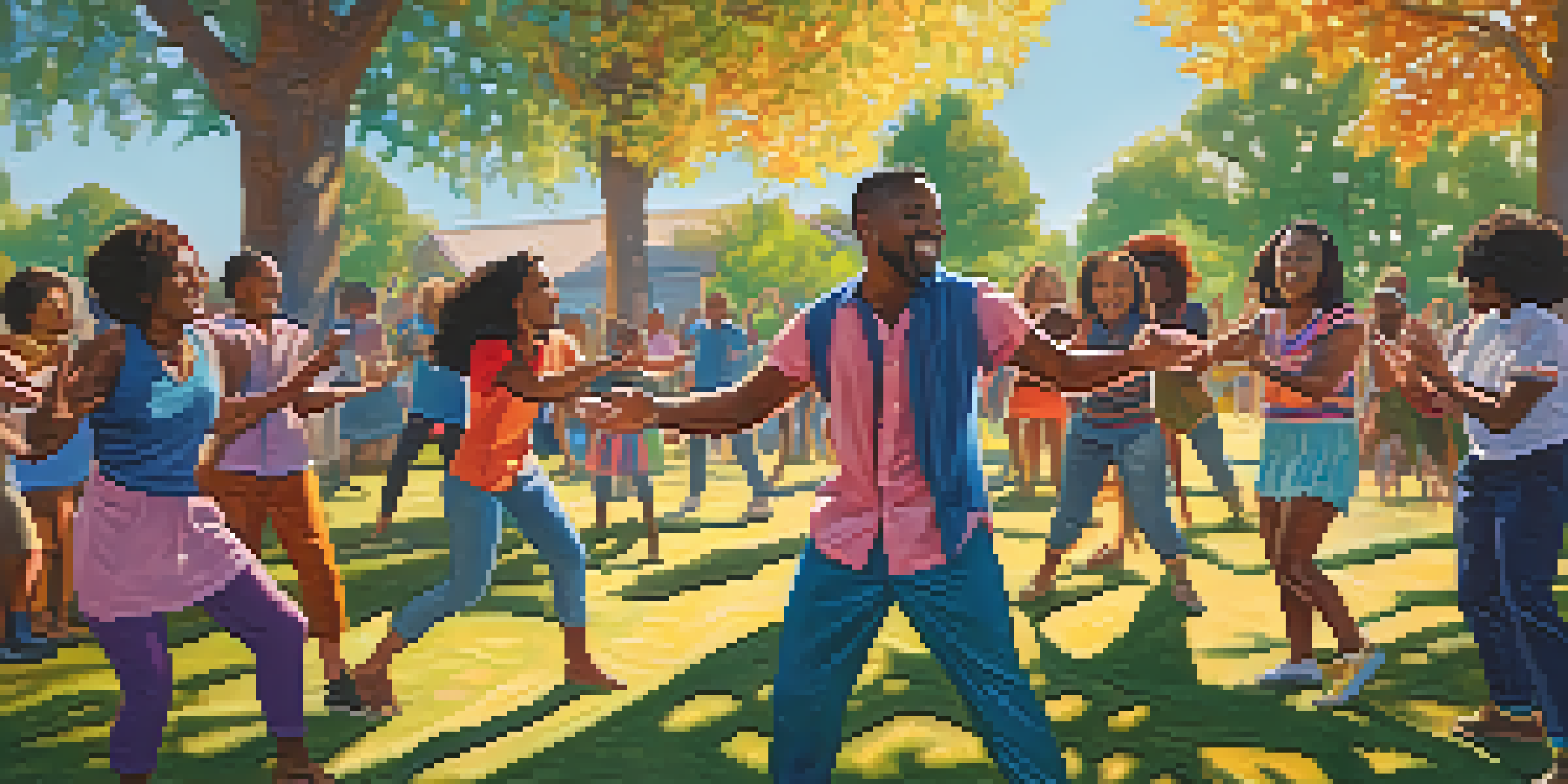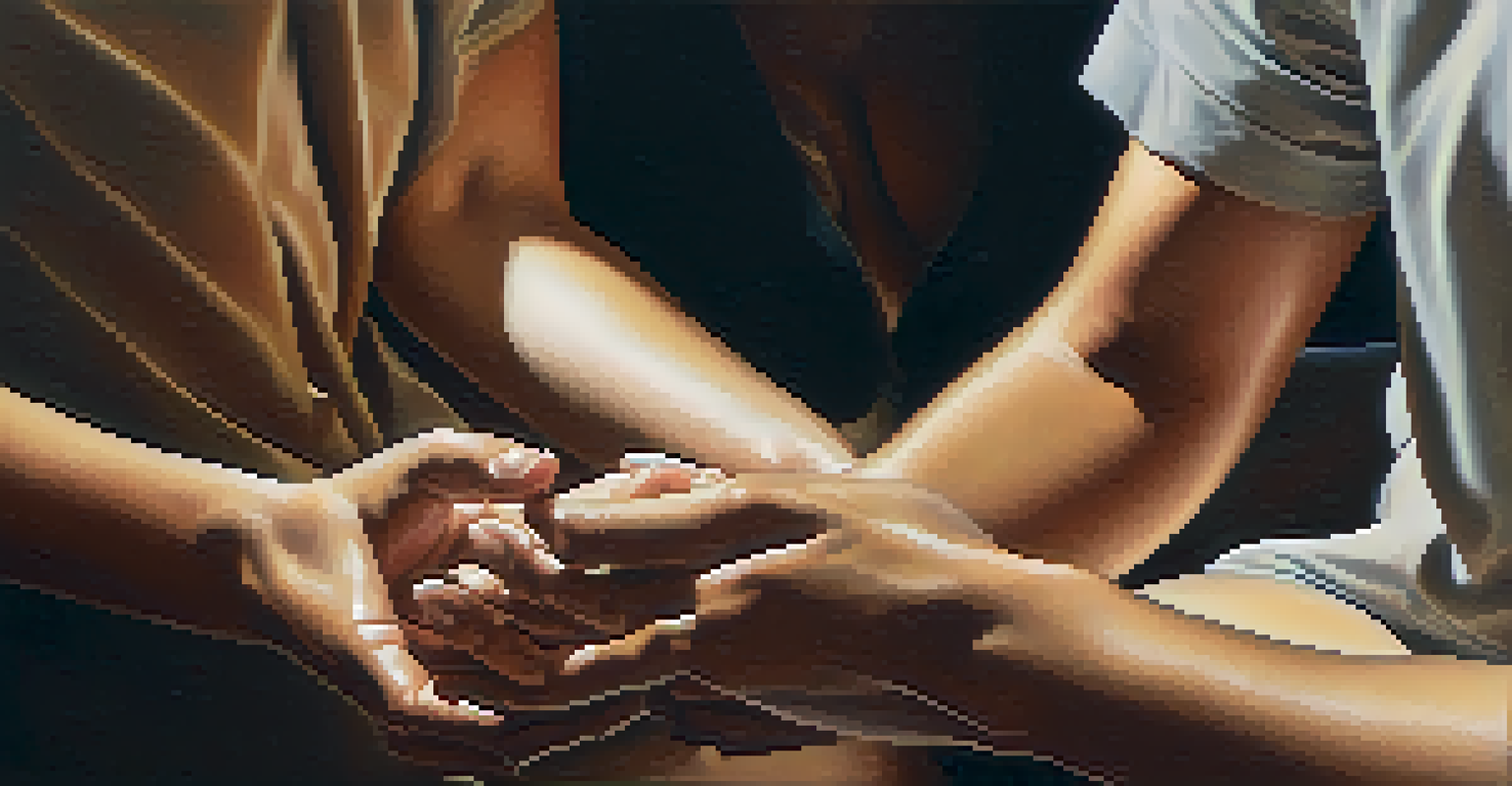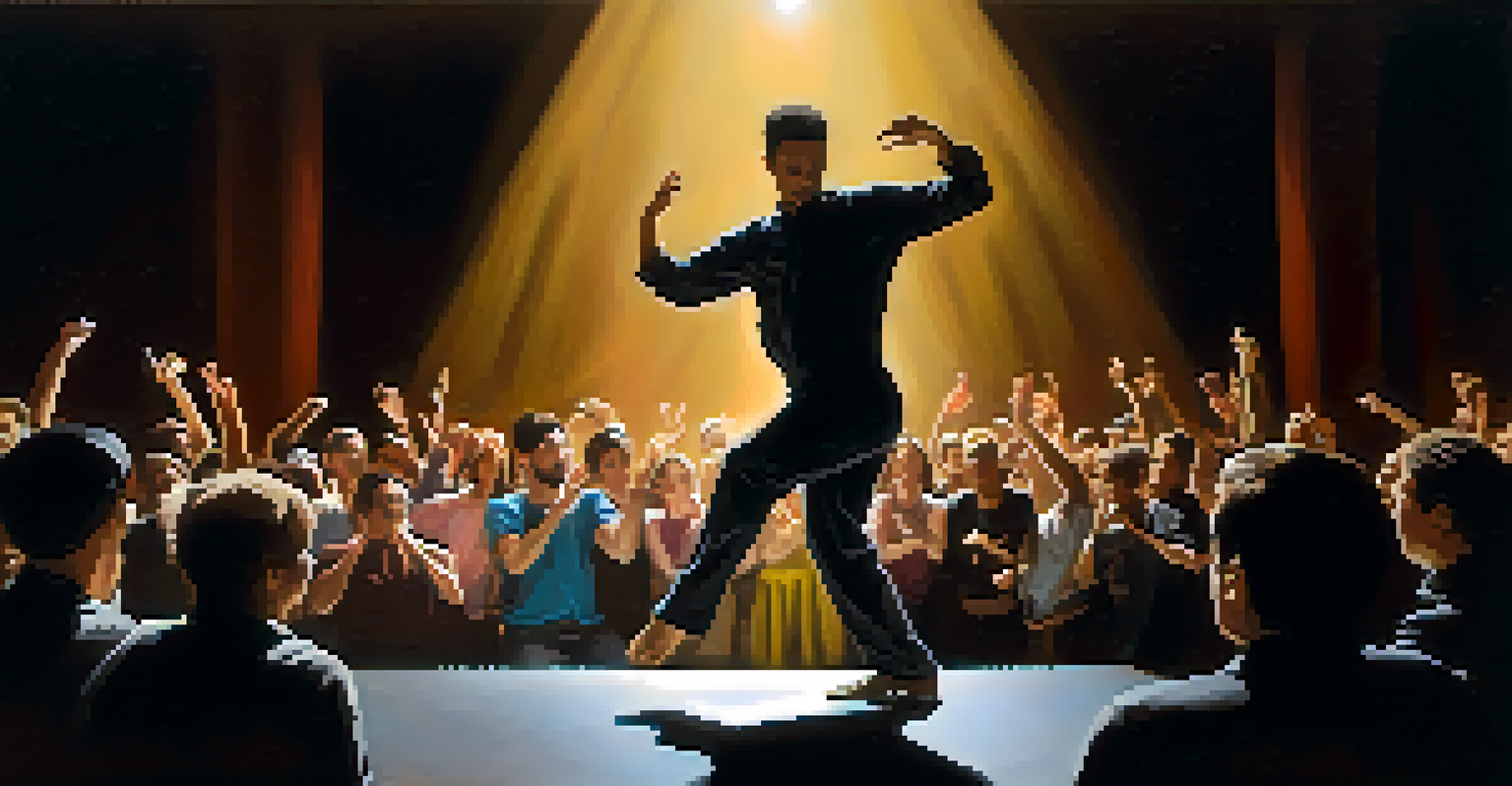Body Percussion: The Fusion of Music and Dance Expressions

What is Body Percussion and Its Origins?
Body percussion is the art of using your body to create rhythmic sounds, merging elements of music and dance. This practice has roots in various cultures, from African tribal rituals to Latin American folk traditions. It's a unique form of expression that transcends traditional musical boundaries, engaging participants in an interactive experience.
The body is a wonderful instrument if only you will play it.
Historically, body percussion has been used in communal gatherings, where participants clap, stomp, and vocalize to create a collective rhythm. This practice is not just about creating music; it's also a way to tell stories and connect with others. As it evolved, body percussion began to incorporate elements from modern music and dance, making it accessible to a broader audience.
Today, body percussion is celebrated in various forms, including performance art, education, and community-building workshops. It fosters creativity and teamwork, often bringing people from different backgrounds together to share in the joy of rhythm. This fusion of music and movement has made it a powerful tool for self-expression and cultural exchange.
The Elements of Body Percussion Techniques
Body percussion techniques can be broken down into several key elements, including clapping, stomping, and vocal sounds. Each of these techniques serves a unique purpose, contributing to the overall rhythm and texture of the performance. For instance, clapping often provides a sharp, clear sound, while stomping adds a deeper, resonant quality.

In addition to these basic sounds, more advanced techniques can include body slaps, chest thumping, and even vocalizations like beatboxing. These sounds can be layered and combined to create complex rhythms that are both engaging and entertaining. The versatility of body percussion allows performers to experiment and innovate, making each performance a unique experience.
Body Percussion's Cultural Roots
Body percussion has deep connections to various cultures, serving as a means of storytelling and celebration.
Moreover, the rhythmic patterns created through body percussion can be influenced by various musical genres, such as jazz, hip-hop, or traditional folk music. This adaptability means that body percussion can resonate with diverse audiences, appealing to people of all ages and backgrounds. It's a vibrant form of expression that encourages creativity and spontaneity.
The Role of Body Percussion in Education
Body percussion has made a significant impact in educational settings, especially in music and dance programs. Teachers often use these techniques to help students develop their sense of rhythm and musicality, enhancing their overall understanding of music. By engaging in body percussion, students can explore concepts like timing, dynamics, and coordination in a fun and interactive way.
Music can change the world because it can change people.
Additionally, body percussion promotes teamwork and collaboration among students. Group activities that involve creating rhythmic patterns together help build trust and communication skills. This collaborative spirit encourages students to express themselves, fostering a sense of belonging and community within the classroom.
Moreover, the accessibility of body percussion makes it an inclusive practice that can be adapted for various age groups and skill levels. Whether in a music class or a community workshop, everyone can participate, regardless of their musical background. This inclusivity not only enhances learning but also nurtures a love for music and movement.
Cultural Significance of Body Percussion
Body percussion holds a rich cultural significance, often rooted in traditions and rituals from around the world. Many cultures have used body percussion as a means of storytelling, communication, and celebration. For example, in African cultures, rhythmic body sounds are integral to ceremonies and social gatherings, often symbolizing unity and identity.
As body percussion practices spread globally, they have adapted and integrated elements from various cultures. This fusion has led to a vibrant array of styles and techniques, each reflecting the unique heritage of its origin. In this way, body percussion serves not only as a musical expression but also as a bridge between cultures, promoting understanding and appreciation.
Educational Benefits of Body Percussion
In educational settings, body percussion enhances rhythm, teamwork, and inclusivity among students.
Contemporary performances often showcase these diverse influences, blending traditional rhythms with modern interpretations. This evolution highlights the adaptability of body percussion, as it continues to inspire artists and audiences alike. By celebrating its cultural roots, body percussion remains a powerful reminder of the universal language of music and movement.
Exploring Body Percussion in Performance Art
Body percussion has found its place in the realm of performance art, where artists use rhythm to create visually captivating experiences. In these performances, the body becomes an instrument, allowing for an innovative exploration of sound and movement. The combination of rhythm and choreography captivates audiences, offering a multisensory experience.
Many contemporary performers incorporate body percussion into theatrical productions, dance routines, or even solo acts. This integration allows for a dynamic interplay between sound and movement, creating a unique narrative that engages viewers on multiple levels. The physicality of body percussion can evoke powerful emotions, drawing audiences into the artist's world.
Moreover, the rise of digital platforms has enabled artists to showcase their body percussion performances to a global audience. This accessibility has sparked interest and enthusiasm for this art form, inspiring new generations to explore the possibilities of body percussion. As artists continue to innovate, the future of body percussion in performance art looks bright and promising.
The Benefits of Practicing Body Percussion
Practicing body percussion offers a variety of benefits, both physical and mental. Engaging in rhythmic movements can improve coordination, balance, and overall body awareness. This physical activity can be a fun way to stay active, promoting a healthy lifestyle while developing musical skills.
Additionally, body percussion encourages mindfulness and focus. As participants concentrate on creating rhythms, they often enter a state of flow, where time seems to stand still. This meditative aspect of body percussion can be a wonderful stress reliever, helping individuals to relax and connect with their bodies.
Exploring Body Percussion in Art
Contemporary performance art utilizes body percussion to create engaging experiences that blend sound and movement.
Socially, body percussion fosters a sense of community and belonging. Whether in a class, workshop, or performance, participants share in a collective experience that builds camaraderie. This connection can lead to lasting friendships and a supportive network, making body percussion not only a musical practice but also a pathway to personal growth.
Getting Started with Body Percussion
If you're interested in exploring body percussion, getting started is easier than you might think! All you need is your body and a willingness to experiment with sounds and rhythms. Begin by clapping your hands, stomping your feet, or tapping your thighs to create simple beats. As you get comfortable, you can layer different sounds to build more complex rhythms.
There are plenty of resources available to help you dive deeper into body percussion. Online tutorials, workshops, and community classes can provide guidance and inspiration as you develop your skills. Connecting with others who share your interest can also enhance your learning experience, allowing for collaboration and creativity.

Remember, the key to enjoying body percussion is to have fun and be open to exploration. There are no strict rules, so allow your creativity to flow. As you practice, you'll discover the joy of rhythm and movement, enriching your appreciation for this captivating fusion of music and dance.